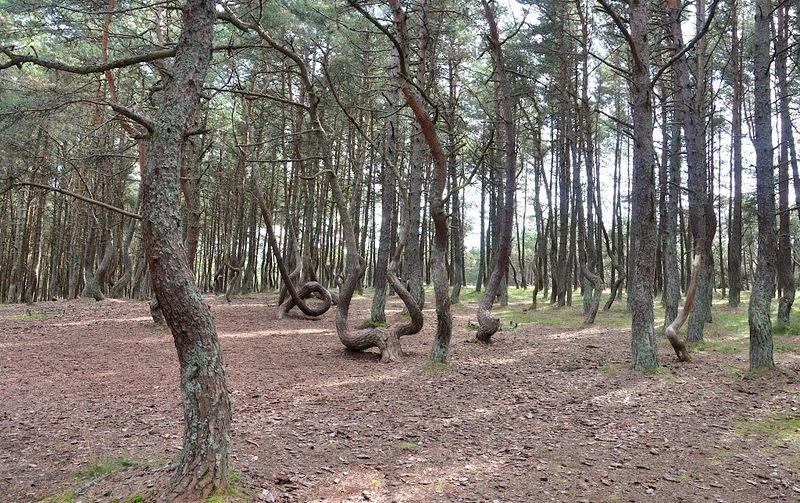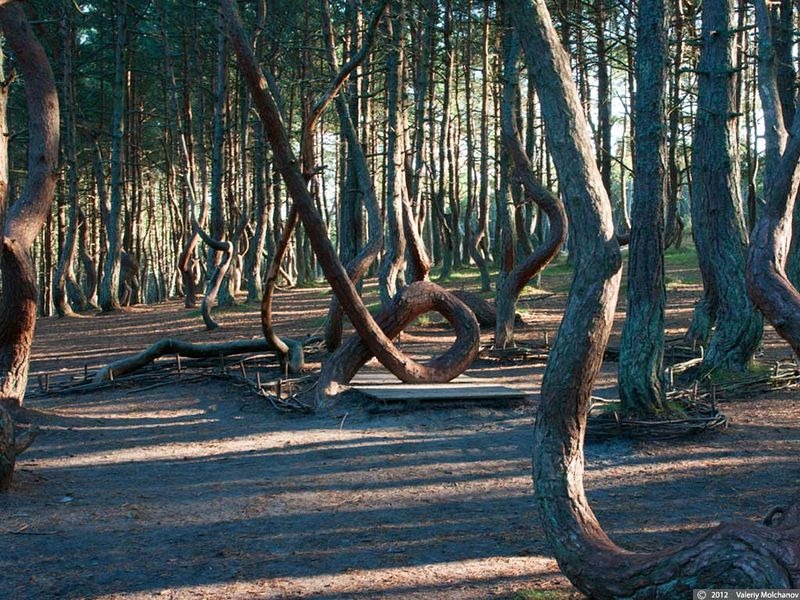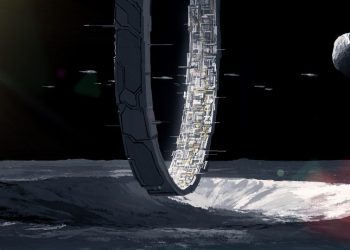The mystery of the Russian dancing forest has puzzled scientists and visitors for decades. In this remote pine grove near the Baltic Sea, trees curl into spirals, loops, and rings—as if twisted by unseen hands. No one agrees on why it happens.
The forest where trees don’t grow straight
Tucked between the Baltic Sea and the Curonian Lagoon, deep in Kaliningrad’s Curonian Spit, lies one of Russia’s strangest landscapes. It’s known as the Dancing Forest—a quiet pine grove where dozens of trees twist and curl in, mysterious unnatural ways. Some spiral in place, some bend into rings or loops, and a few even arch toward the ground like the spine of a giant snake. From the air, it looks like a glitch in nature. A glitch in the matrix. On the ground, it feels even stranger.
Planted in the 1960s to help stabilize the coastal sand dunes, this forest wasn’t meant to be anything special. But soon after the trees began to grow, people started to notice that something was off. Some called it the Drunken Forest. Others believed the land was cursed—or blessed. Scientists came to investigate. Theories were proposed. But none of them really stuck.

What causes trees to twist like this?
The most common explanation comes from entomology. Some researchers believe the culprit is the pine shoot moth, Rhyacionia buoliana. These caterpillars feed on young pine shoots, damaging the tree’s top bud. When that main bud is destroyed, the tree has to rely on its side buds to grow upward. That process can produce oddly bent trunks, especially if the tree is fighting for light or leaning against wind.
Over time, the tree may try to correct itself and grow straight again, but the damage remains in its lower trunk—leaving behind the signature spirals and bends we see today.
Still, that theory doesn’t satisfy everyone. Some researchers suggest wind plays a major role, especially the strong coastal gusts that batter the area. Others believe humans might have shaped the trees when they were saplings, possibly as a forgotten experiment or mistake.

And then there are the stories. Local legends speak of clashing spiritual energies beneath the forest floor. Some believe the trees twist in response to these invisible currents—natural forces that flow beneath the sand and shape everything above. Others say the forest is a “thin place,” where the boundary between physical and spiritual worlds bends, just like the trees.
One folk explanation is surprisingly simple: the trees are following the movement of the shifting sand dunes beneath them, slowly leaning into the earth’s quiet dance.
No one knows for sure

The mystery of the Russian dancing forest remains unsolved. Multiple studies have been done. Plenty of logical ideas have been floated. But none explain why so many trees in one small patch would bend so dramatically—and so consistently.
Today, it draws travelers, photographers, and wanderers. Some come for science. Some for silence. Some just to see trees doing what trees should never do. Whether you see a glitch in nature, a biological puzzle, or a message from something ancient, the forest doesn’t offer answers.











